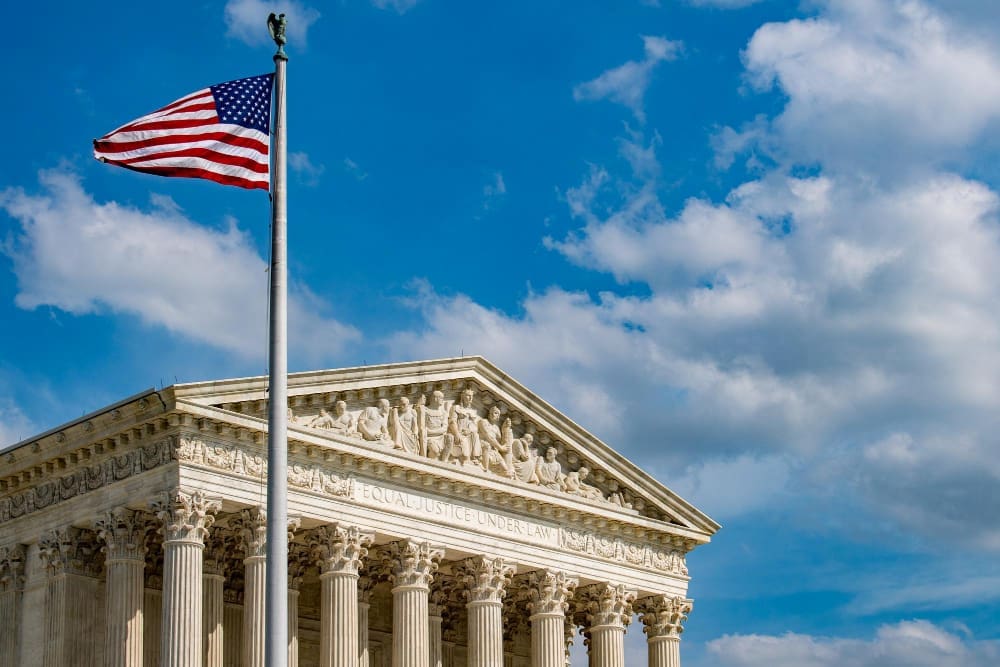Executive Summary
- The Supreme Court has agreed to review the legal basis of President Trump’s use of emergency authority to impose steep tariffs on goods from trading partners.
- President Trump’s application of the 1977 law to impose broad tariffs on trade partners marks the first instance of its use for this purpose, historically reserved for sanctions.
- Both President Trump’s legal team and challengers are urging the justices to issue a prompt judgment due to the ongoing economic harm and uncertainty caused by the tariffs.
The Story So Far
- President Trump’s administration has made the imposition of steep tariffs a hallmark economic policy, using them to compel countries to pay for market access. This approach, however, represents a novel application of a 1977 law, which was historically used for sanctions rather than broad trade tariffs, leading to legal challenges and economic uncertainty that both sides want the Supreme Court to address quickly.
Why This Matters
- The Supreme Court’s agreement to review President Trump’s emergency tariff authority signifies a pivotal legal battle that will define the limits of presidential power under the 1977 law, potentially setting a new precedent for how future administrations can impose broad economic sanctions. This high-stakes ruling is crucial for resolving the ongoing economic uncertainty that has reportedly hindered global output and will directly impact trade relations and the financial well-being of hundreds of millions worldwide.
Who Thinks What?
- President Trump views tariffs, ranging from 10 to 50 percent, as a mechanism to compel other countries to pay the United States for market access, making this approach a central tenet of his economic strategy.
- Attorneys representing the challengers argue that President Trump’s use of the 1977 law to impose broad tariffs on trade partners is legally questionable and has caused economic harm due to ongoing uncertainty.
- Think tank experts and websites tracking trade details contend that the uncertainty generated by President Trump’s tariffs has contributed to a slowdown in economic output.
The Supreme Court has agreed to review the legal basis of President Trump’s use of emergency authority to impose steep tariffs on goods from numerous trading partners, a decision announced on Tuesday. This high-stakes examination will scrutinize a key economic policy that has been a hallmark of his administration and has drawn legal challenges over its application of a 1977 law.
Legal Precedent and Presidential Authority
Historically, presidents have utilized the 1977 law to implement sanctions targeting other nations. However, President Trump’s application marks the first instance of the statute being used to impose broad tariffs on trade partners, setting a new precedent for presidential economic powers.
President Trump has consistently advocated for tariffs, ranging from 10 to 50 percent, as a mechanism to compel other countries to pay the United States for market access. This approach has been a central tenet of his economic strategy since his early political career.
Economic Impact and Uncertainty
Despite President Trump’s pledges for swift international trade deals and threats of higher levies, progress has reportedly been slower than anticipated. Websites tracking trade details and think tank experts argue that the uncertainty generated by these tariffs has contributed to a slowdown in economic output.
Both President Trump’s legal team and attorneys representing the challengers have urged the justices to issue a prompt judgment. They cite the economic harm caused by ongoing uncertainty as a critical factor necessitating swift judicial review.
Supreme Court’s Role
The Supreme Court’s conservative majority has previously granted several of President Trump’s emergency requests this year. However, this tariffs case represents the first opportunity for the justices to thoroughly evaluate the legal underpinnings of a core administration priority that impacts hundreds of millions of people globally.
In summary, the Supreme Court’s agreement to hear the tariffs case sets the stage for a significant legal battle over presidential authority in economic policy. The outcome will determine the scope of a president’s emergency powers to levy tariffs and could reshape global trade relations.








